Celebrating 40 Years of Saving Plants
40 years ago, the Center for Plant Conservation (CPC) was founded as a one-of-a-kind network, uniting plant conservationists from botanical gardens, arboreta, and other plant-focused organizations that collaboratively work to save the rare and endangered plants of the United States, its territories, and Canada from extinction. Co-founded in 1984 by graduate students Don Falk and Frank Thibodeau at the Arnold Arboretum of Harvard University in Jamaica Plain, Massachusetts, CPC specializes in the conservation of native flora by utilizing ex situ—offsite, away from the wild population—curation techniques, such as collecting and banking seeds, growing plants from seed in nurseries, and establishing conservation best-practice protocols.
Falk and Thibodeau understood that we can save more plants by working together than would ever be possible alone. They strategically recruited botanical gardens throughout the country to engage in ex situ conservation of targeted rare plant species and to house them in their own conservation collections, including seed banks, nurseries, garden displays, tissue culture labs, and cryopreservation tanks. These ex situ collections form the CPC National Collection of Endangered Plants—an important conservation resource which serves as an emergency backup in the event a species becomes extinct or no longer reproduces in the wild. Initially, 14 botanical institutions joined CPC’s network: The Arboretum at Flagstaff, The Arnold Arboretum of Harvard University, Bok Tower Gardens, California Botanic Garden, Denver Botanic Gardens, Desert Botanical Garden, Fairchild Tropical Botanic Garden, Holden Arboretum, Missouri Botanical Garden, National Tropical Botanical Garden, Native Plant Trust, North Carolina Botanical Garden, Red Butte Garden, and Waimea Arboretum Foundation. Within three years, 200 species of rare plants had been secured in the National Collection.
Today, CPC—headquartered at the San Diego Zoo Wildlife Alliance in San Diego County, California—serves as a trusted authority and foremost resource in science-based best practices for the conservation of rare and endangered native plants. Our network of world-class botanical institutions has grown to 75 partners, and over 2,600 species are now safeguarded in the National Collection—bringing CPC more than halfway to our goal of securing all 4,400 rare North American plant species.
Sponsor a Plant in Honor of CPC’s 40th Anniversary
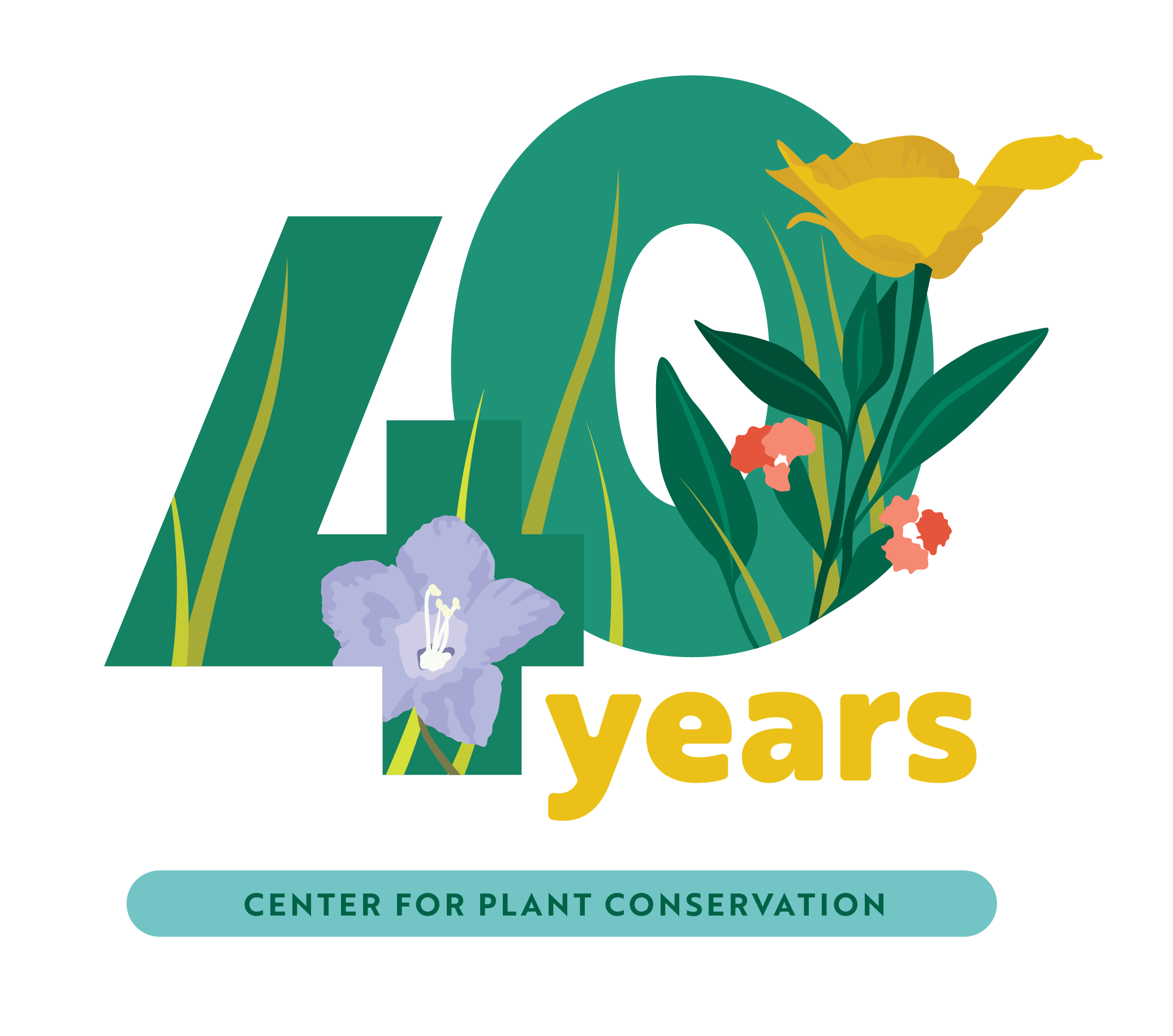
To celebrate our milestone 40th anniversary, CPC invites you to sponsor a rare plant in support of our ‘40 for 40’ campaign! Our goal: to raise $200,000 to sponsor 40 plant species in the National Collection in honor of our 40 years of saving plants from extinction.
We’ve curated a special selection of rare plant species in need of sponsorship as part of this 40th anniversary campaign—highlighting the incredible beauty and diversity of North America’s rare and endangered plants. From the iconic Venus’ flytrap of the Carolinas and the charming Estuary monkeyflower of the Northeast wetlands, to the radiant White fire-wheel of Eastern Texas and the towering Torrey Pines of Southern California’s coasts—there are an abundance of endangered plants that need your support!
Double the impact of your gift – every $5K raised will be matched to achieve a full $10K sponsorship! The CPC Board of Trustees has pledged $200,000 in matching funds for the ‘40 for 40’ anniversary campaign. For every $5K raised per plant species, our Board of Trustees will provide $5K in matching funds to bring the species to the full sponsorship level of $10K–growing the impact of your gift in support of rare and endangered plants. We are proud to have one hundred percent participation from our Board of Trustees for this match.
Plant sponsorships play a critical role in CPC’s mission to Save Plants from extinction. When a CPC Participating Institution (PI) accepts responsibility for a National Collection species, it makes a long-term commitment to steward the species for future generations. PIs invest significant resources and effort in securing and holding the imperiled plant material, and they advance research and new technologies on the best ways to grow, manage, and restore these rare species. To offset some of the expenses of collecting, growing, and researching these plant species, CPC created the Plant Sponsorship Program. Plant sponsorships provide the PI responsible for the named species with steady, reliable funding for long-term work. A sponsorship does not cover all the expenses, but it provides significant help and stability. By supporting the Plant Sponsorship Program, you are directly funding the stewardship of plants in the National Collection and aiding conservation work throughout CPC’s nationwide network.
____________________________________________________________
Meet the Plants
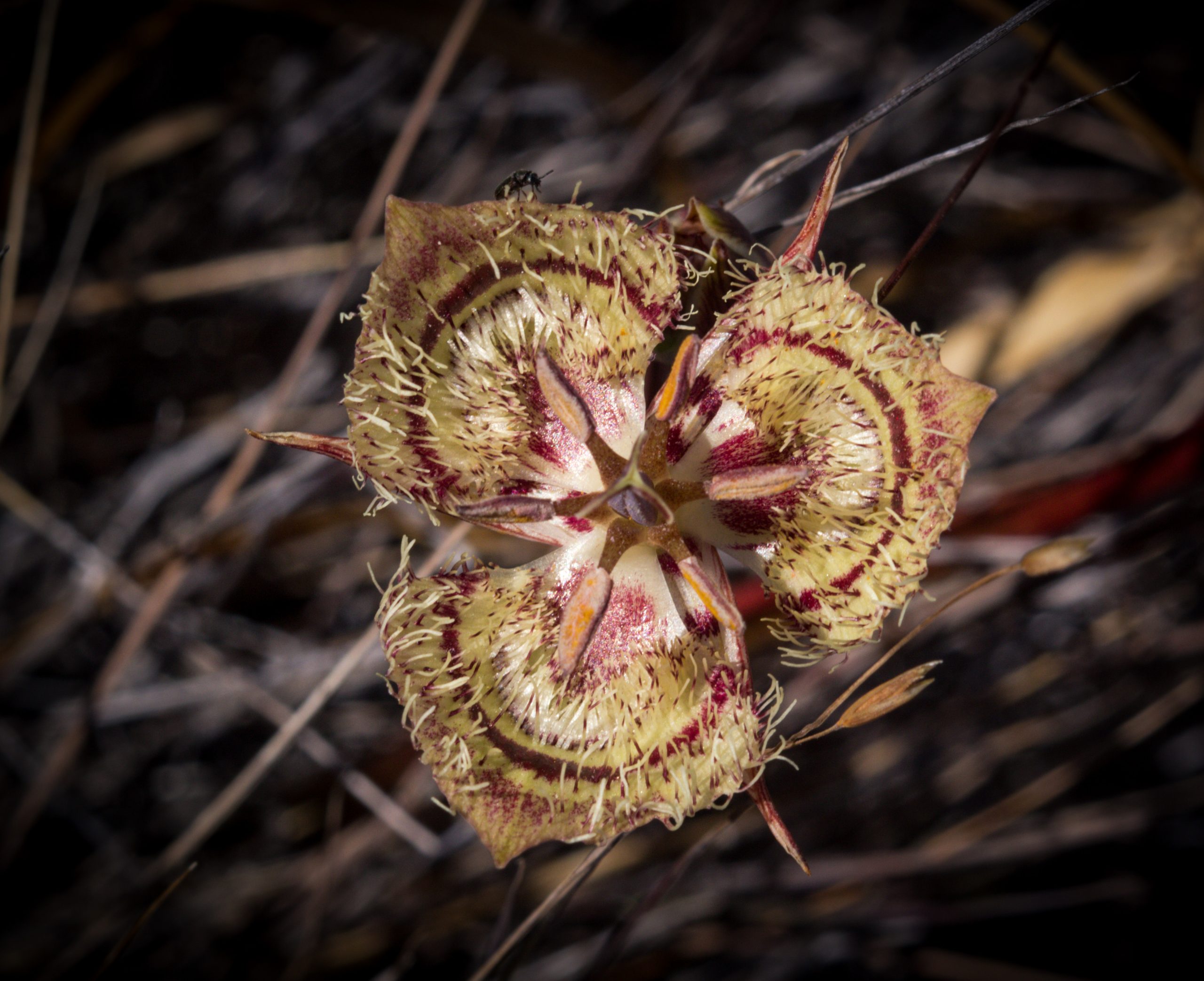
Tiburon Mariposa Lily (Calochortus tiburonensis) is a critically imperiled lily species endemic to a single summit on the Tiburon Peninsula in Marin County, CA. This California endemic lily boasts a striking flower, featuring hairy petals colored light yellow with flecks of dark purple and brown. With only one population known to exist, the Tiburon Mariposa Lily is listed as Threatened under the U.S. Endangered Species Act. Primary threats to this species include recreational activities and the spread of non-native plant species, necessitating consistent monitoring and management for mitigation.
Calochortus tiburonensis is secured in the CPC National Collection at the University of California Botanical Garden at Berkeley (UCBG). In 2018, UCBG collected seed from the only known population of this species, in the Ring Mountain Preserve on the Tiburon Peninsula. This accession, representing over 130 maternal lines, is held in the UCBG seed bank in orthodox storage.
Sponsor Tiburon Mariposa Lily!
_________________________________________________________________
Venus’ Flytrap (Dionaea muscipula) is globally imperiled and native to wet pine savannahs in the Carolinas, with the vast majority of remaining populations surviving in North Carolina. A major threat facing this charismatic species is poaching, due to Venus’s Flytrap being coveted and widely traded in the horticultural trade. Carnivorous plants such as the Venus’ Flytrap rely on unsuspecting insects for nutrients, snagging a meal when visiting prey trigger the trap-like lobes on the plant’s leaves to snap shut. After capturing their prey with this clever mechanism, digestive enzymes from the plant dissolve the insects, providing nutrients to sustain the plant.
Venus’ Flytrap is held in the CPC National Collection at North Carolina Botanical Garden, which has collected seed from the wild to hold in orthodox storage and has also conducted genetic research.
Sponsor Venus’ Flytrap!
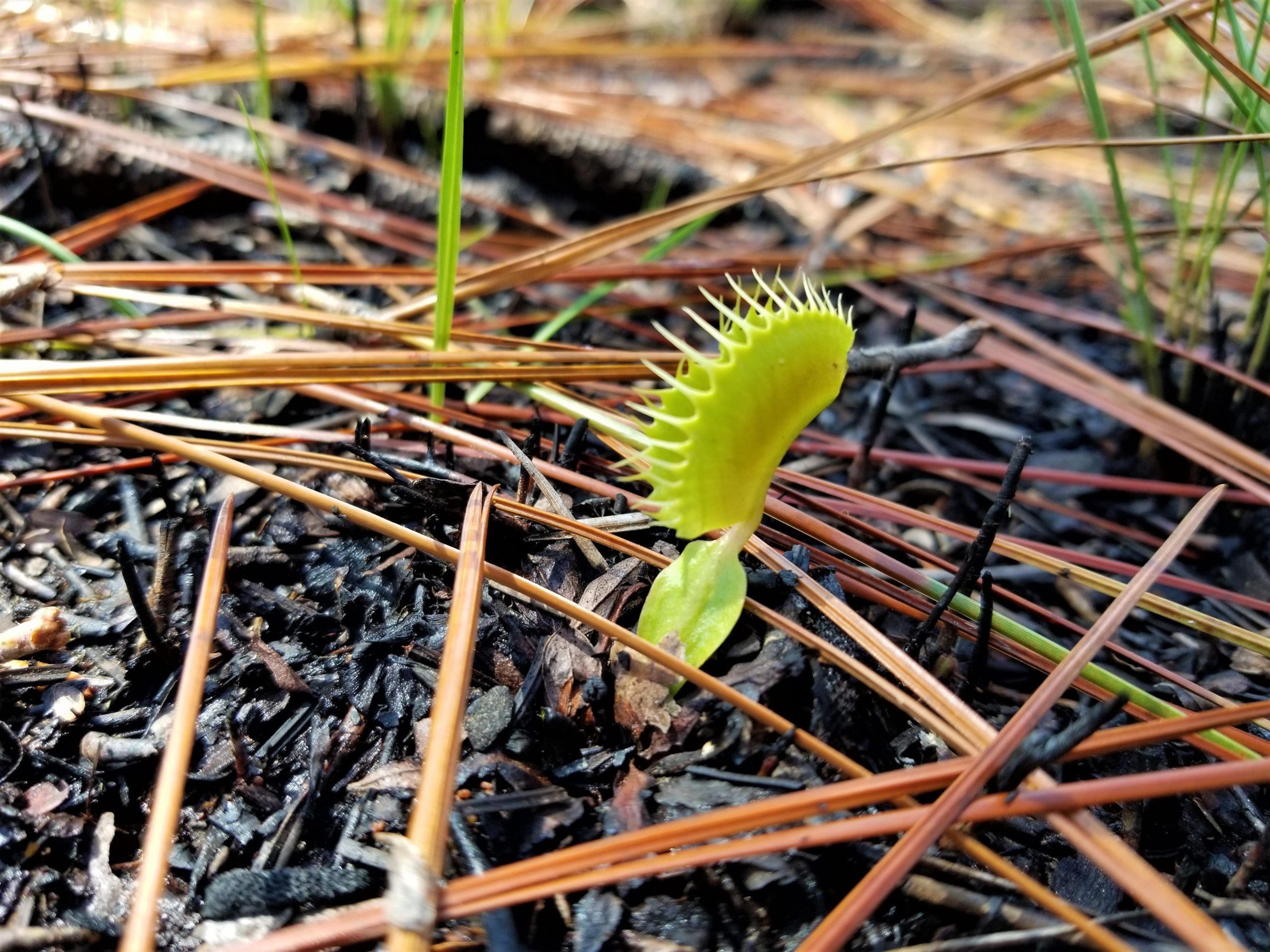
_________________________________________________________________
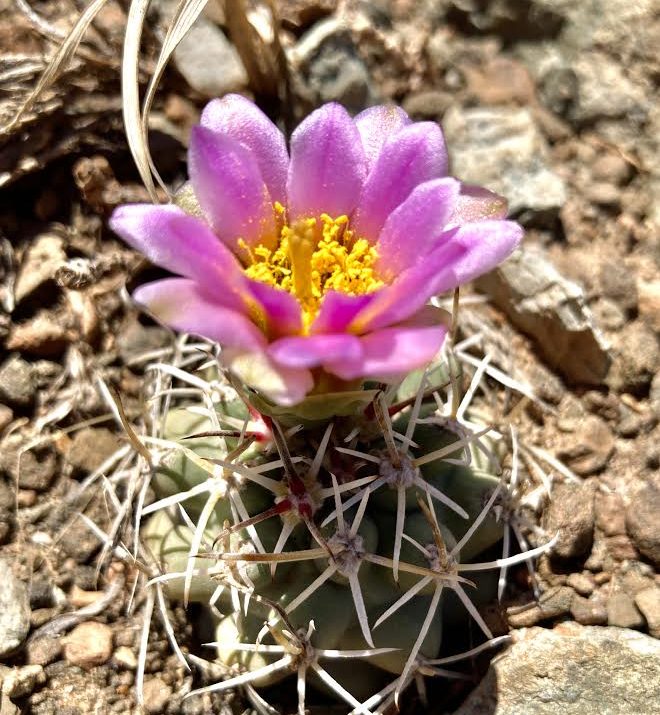
The Colorado hookless cactus (Sclerocactus glaucus) can be difficult to find in the river alluvium habitat it calls home, in western Colorado and eastern Utah. When not in bloom, the perennial stem tends to be inconspicuous in the coarse gravel—and it can even shrink below the ground during large stretches of the year—making these plants hard to spot and identify. Fortunately, this federally threatened cactus produces striking pink flowers from April to May. Nearly all populations are threatened with habitat destruction or modification from energy extraction developments, water storage projects, transportation, and residential facilities. Other ongoing threats include impacts from operations to collect moss-rock and rip-rap, illegal plant collection, and damage from recreational use or livestock trampling.
Colorado hookless cactus is safeguarded in the CPC National Collection at Denver Botanic Gardens, which maintains a seed collection and has established macroplots of populations to monitor demographic trends as part of its conservation efforts to save this species from extinction.
Sponsor Colorado Hookless Cactus!
_________________________________________________________________
Fernald’s northern rockcress (Braya fernaldii) makes its home in limestone barrens on Newfoundland’s Great Northern Penninsula, frequented by freezing winds and neighbored by the icy Atlantic. Among other threats, Fernald’s northern rockcress’s limited habitat is frequently quarried for gravel and driven over or trampled by recreational vehicles and their drivers—but the species is fortunately capable of recolonizing human-disturbed areas. These recolonized populations, however, are often more densely populated and contain larger individuals, leading to new threats: attracting invasive pests like the diamondback moth, an agricultural pest, and fungal pathogens.
This endemic rockcress species is stewarded in the CPC National Collection by the Memorial University of Newfoundland Botanical Garden (MUNBG). To properly secure and conserve this rare plant ex situ, teams from MUNBG must be careful when collecting material from wild populations. Healthy seed needs to come from healthy plants. Pathogen research allows MUNBG scientists to ensure they collect from uninfected individuals and bring back disease-free seed.
Sponsor Fernald’s Northern Rockcress!
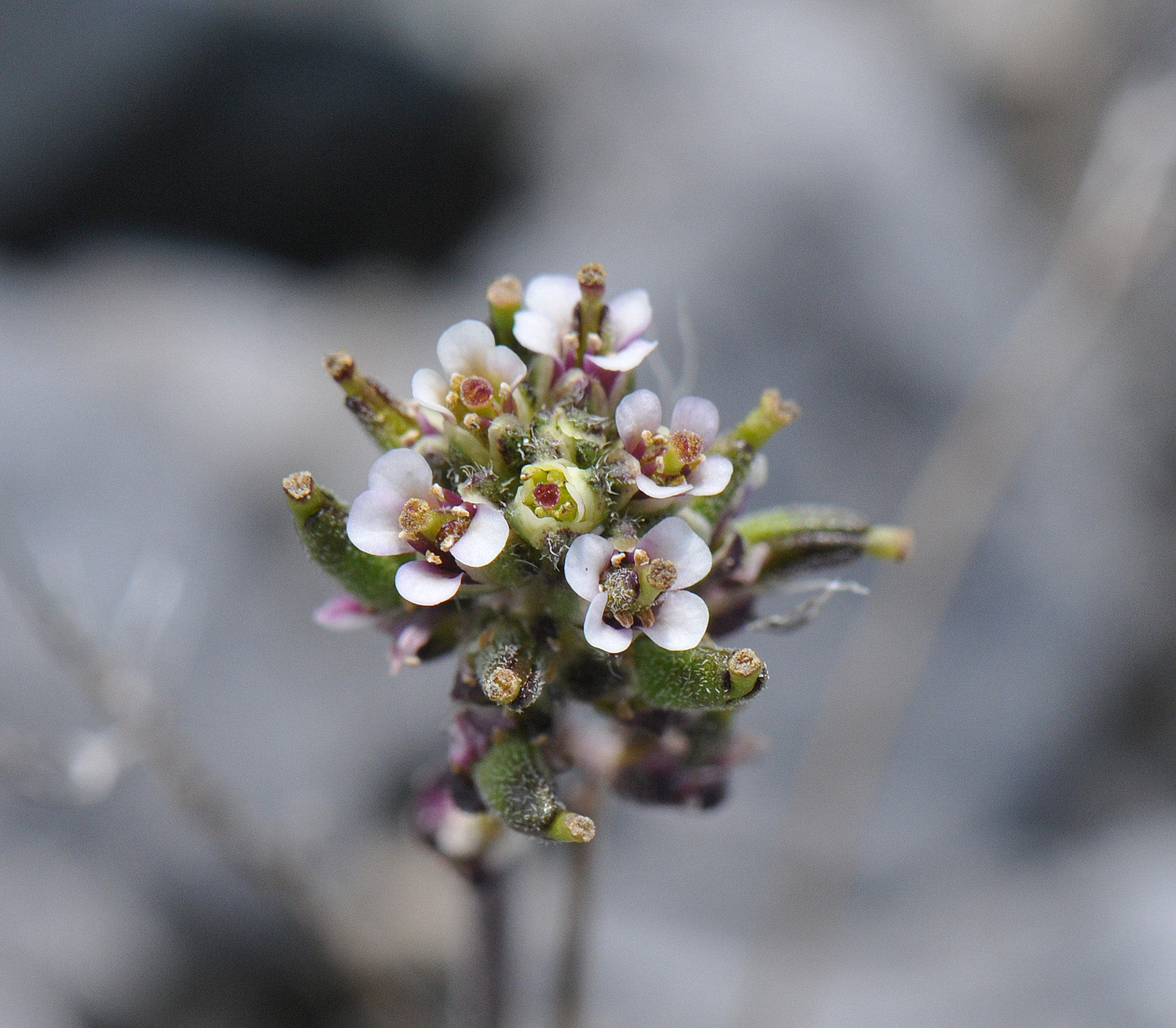
_________________________________________________________________

Cedros Island Oak (Quercus cedrosensis) is an imperiled oak species native primarily to Cedros Island in Baja California, Mexico, with one population occurring at Otay Mountain in San Diego, CA. Major threats to this species include drought, wildfire, and border activities. Oaks are exceptional species—meaning they cannot be stored using traditional seed banking methods—and are often conserved in living collections or other forms of long-term storage, such as cryopreservation. In 2017, only one individual of Quercus cedrosensis was known to be held ex situ in a conservation collection.
Now, Quercus cedrosensis is secured in the CPC National Collection at San Diego Botanic Garden (SDBG), San Diego Zoo Wildlife Alliance, California Botanic Garden, and The Huntington. Genetic material from this species at the Otay Mountain population has been collected in the form of cuttings and a few acorns, grown as a living conservation gene bank by San Diego Botanic Garden, with seedlings held in their nursery and distributed to The Huntington. Seeds from this species are hard to come by, as many wild individuals produce few to no acorns—making cuttings a helpful tool for conservation collections.
Sponsor Cedros Island Oak!
_________________________________________________________________
These endangered plants all need your support! We invite you to learn more about our 40th anniversary campaign and its selection of 40 incredible imperiled plants, for which we are raising funds to support their ongoing conservation and to ensure their survival for generations to come.